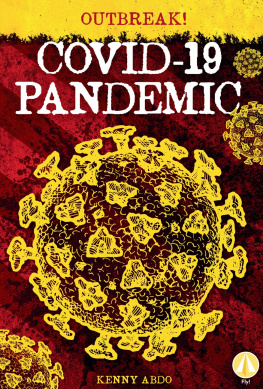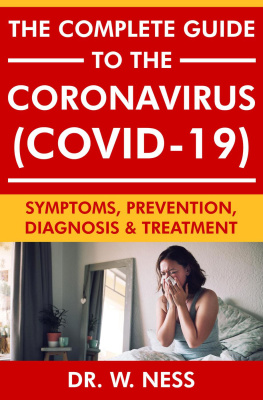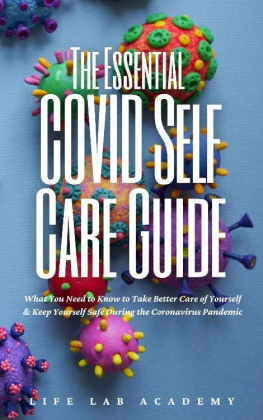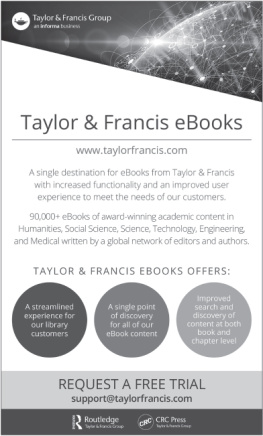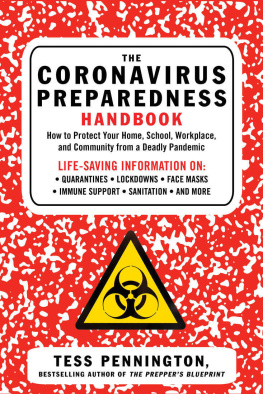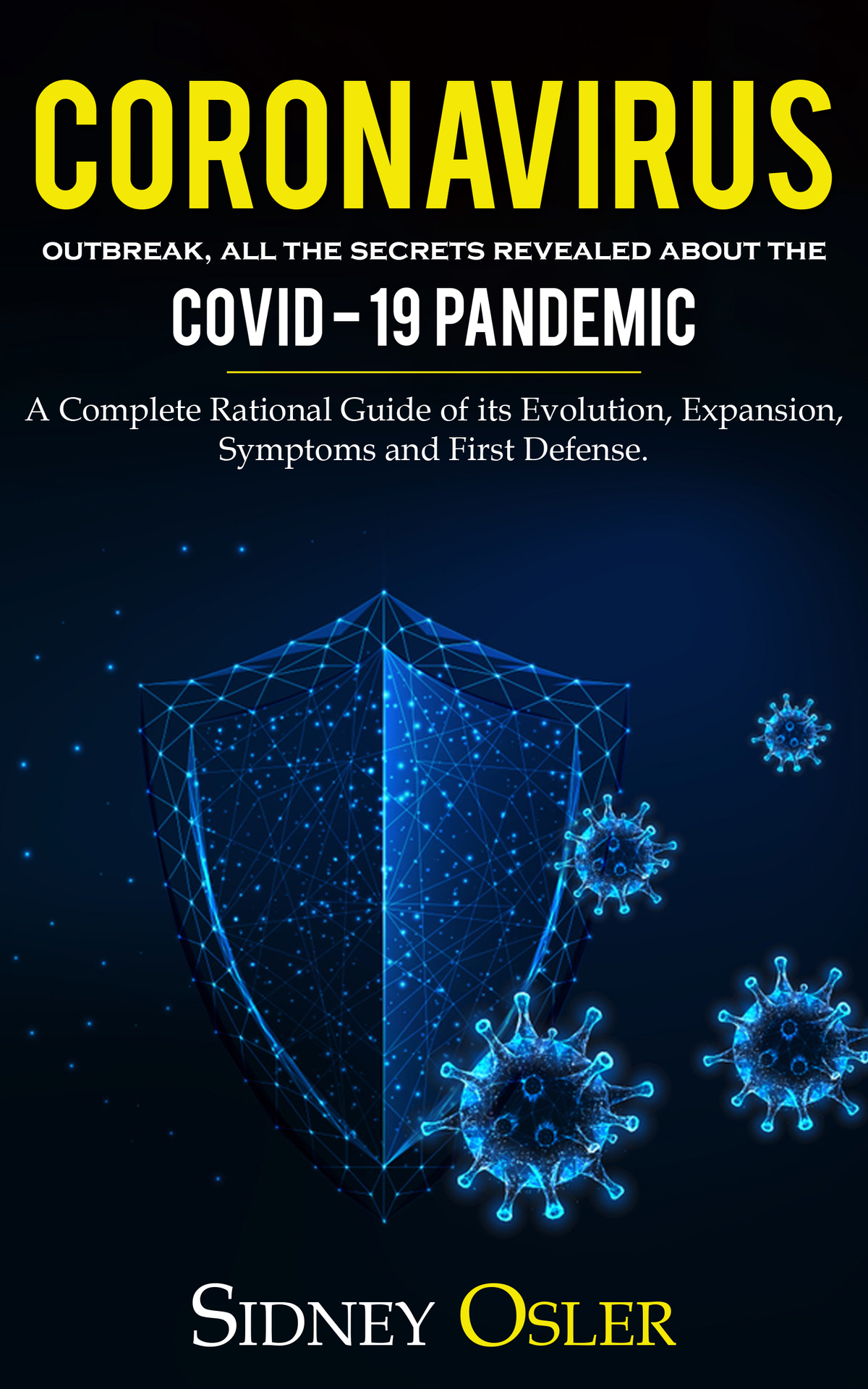Coronavirus outbreak
All the secrets revealed about the Covid-19 pandemic.
A complete rational guide of its Evolution, Expansion,
Symptoms and First Defense.
Written by Sidney Osler
Copyright 2019 by Sidney Osler.
All rights reserved.
This document is geared towards providing exact and reliable information with regards to the topic and issue covered. The publication is sold with the idea that the publisher is not required to render accounting, officially permitted, or otherwise, qualified services. If advice is necessary, legal or professional, a practiced individual in the profession should be ordered.
From a Declaration of Principles which was accepted and approved equally by a Committeeof the American Bar Association and a Committee of Publishers and Associations.
In no way is it legal to reproduce, duplicate, or transmit any part of this document in either electronic means or in printed format. Recording of this publication is strictly prohibited and any storage of this document is not allowed unless with written permission from the publisher. All rights reserved.
The information provided herein is stated to be truthful and consistent, in that any liability, in terms of inattention or otherwise, by any usage or abuse of any policies, processes, or directions contained within is the solitary and utter responsibility of the recipient reader.
Under no circumstances will any legal responsibility or blame be held against the publisher for any reparation, damages, or monetary loss due to the information herein, either directly or indirectly.
Respective authors own all copyrights not held by the publisher.
The information herein is offered for informational purposes solely, and is universal as so. The presentation of the information is without contract or any type of guarantee assurance.
The trademarks that are used are without any consent, and the publication of the trademark is without permission or backing by the trademark owner. All trademarks and brands within this book are for clarifying purposes only and are the owned by the owners themselves, not affiliated with this documen t .
TABLE OF CONTENTS
INTRODUCTION: WUHAN EPIDEMY
According to most of the world's leading transmittable disease experts, the Wuhan corona virus spreading from China is now likely to develop into a pandemic that circles the globe. Its prospect is really overwhelming. A pandemic a spreading outbreak on two or more continents may well have global consequences, with China and other countries, including the United States, which are now enforcing unprecedented travel restrictions and quarantines.
Yet scientists still don't know how lethal the new corona virus is, so there's concern about how much harm the pandemic might do. There is, however, growing consensus that the pathogen is being readily transmitted among humans. The Wuhan corona virus acts more like the highly transmissible influenza than scientists have found in its slow-moving viral relatives, SARS and MERS.
The number of laboratory-confirmed cases has risen over the last three weeks from about 50 in China to over 17,000 in at least 23 countries; there have been more than 360 deaths. Yet specific epidemiological models predict the total number of cases to be 100,000, or even more. While that growth isn't as quick as flu or measles, it's a huge leap beyond what virologists saw when SARS and MERS came up.
Researchers are yet to say who is at the highest risk of developing serious or life-threatening disease, and what factors may protect against the disease. Kids are far less likely than middle-aged and older men to develop severe illnesses. Most of these foreign nationals who have lately visited China are barring entry through the United States. Americans who return from Wuhan and the epicenter of the outbreak, Hubei Province, are to be quarantined for two weeks. Federal health officials warn Americans not to fly to China anyway.
This is a very critical public health problem, and proactive action to protect the public has been and will continue to be taken by the C.D.C. and federal government. However, there are only a handful of cases in the U.S. and the risk to the Americans is low for now. Here's what people have learned about the virus and the outbreak so far.
CHAPTER 1: HUMAN CORONA VIRUS OUTBREAK 2020
As 2019 drew to a close, reports emerged from an outbreak of unexplained aetiology pneumonia, with cases clustered around Wuhan's Huanan Seafood Wholesale Market, China that sold live fish, poultry, and birds. The cases were observed as of December 8th and the cluster was first identified on December 31st. The market was being shut down on 1 January 2020 and on 7 January a new type of corona virus was officially detected by the Chinese authorities. All suspect cases found were checked by active case finding and retrospective examination. Around 300 cases in Wuhan were believed to have been infected with this new virus, and four died.
It is also suspected that previous outbreaks of similar diseases, including SARS, have arisen from live animal markets. Camels transmit the corona virus which causes MERS to humans. The animal that was the source of the latest corona virus is still unknown, and the collapse of the meat market in Wuhan has made the matter almost impossible to investigate. Bats are considered a possible source, because many viruses, including corona viruses, have adapted to coexist. Nevertheless, it is very likely that the virus was transmitted to an intermediate species from the bats, and then to humans.
Wuhan, a strong virology centre in China, was well placed to diagnose and tackle the outbreak. It has however brought China's disease preparedness to the test in a part of the world that still regularly remembers the 2003 extreme corona virus outbreak of acute respiratory syndrome (SARS). The virus then spread from China to 25 other nations, infecting over 8,000 people and killing about 800 people before it was contained. In the present case, the pace at which the Chinese authorities announced the outbreak to the international community was commendable and shows that lessons from previous outbreaks have been learned.
As the international community reacts to an outbreak of corona virus induced pneumonia in Wuhan, China, early and transparent data sharingessential to its protectionis dependent on the trust that the data will not be used without proper attribution to those who created it.
What is the Human Corona virus, and How Dangerous Is It?
Corona viruses are a large virus family usually targeting the respiratory organ. The name is being derived from the Latin word corona, meaning crown, due to the spiky fringe which surrounds these viruses. Many species, such as bats, cats and birds, get sick. Just seven are known to infect humans like Covid-19, SARS, and MERS.
SARS is believed to have developed in China from bats to civet cats to humans; MERS has spread from bats to camels into Middle East humans. No one knows where the Covid-19 came from. For now, livestock in Wuhan, China, a town of 11 million, are thought to have taken the jump late last year. But scholars still seek to understand their exact roots.
As for the signs, in 10 and more than 30 percent of cases, two of the seven corona viruses that infect humans, SARS and MERS, can cause severe pneumonia, and even death. The others, though, show milder effects, like a common cold. Apparently, it's evident that Covid-19 will kill but it's not clear how often or how it relates the fatality rate to SARS and MERS.




